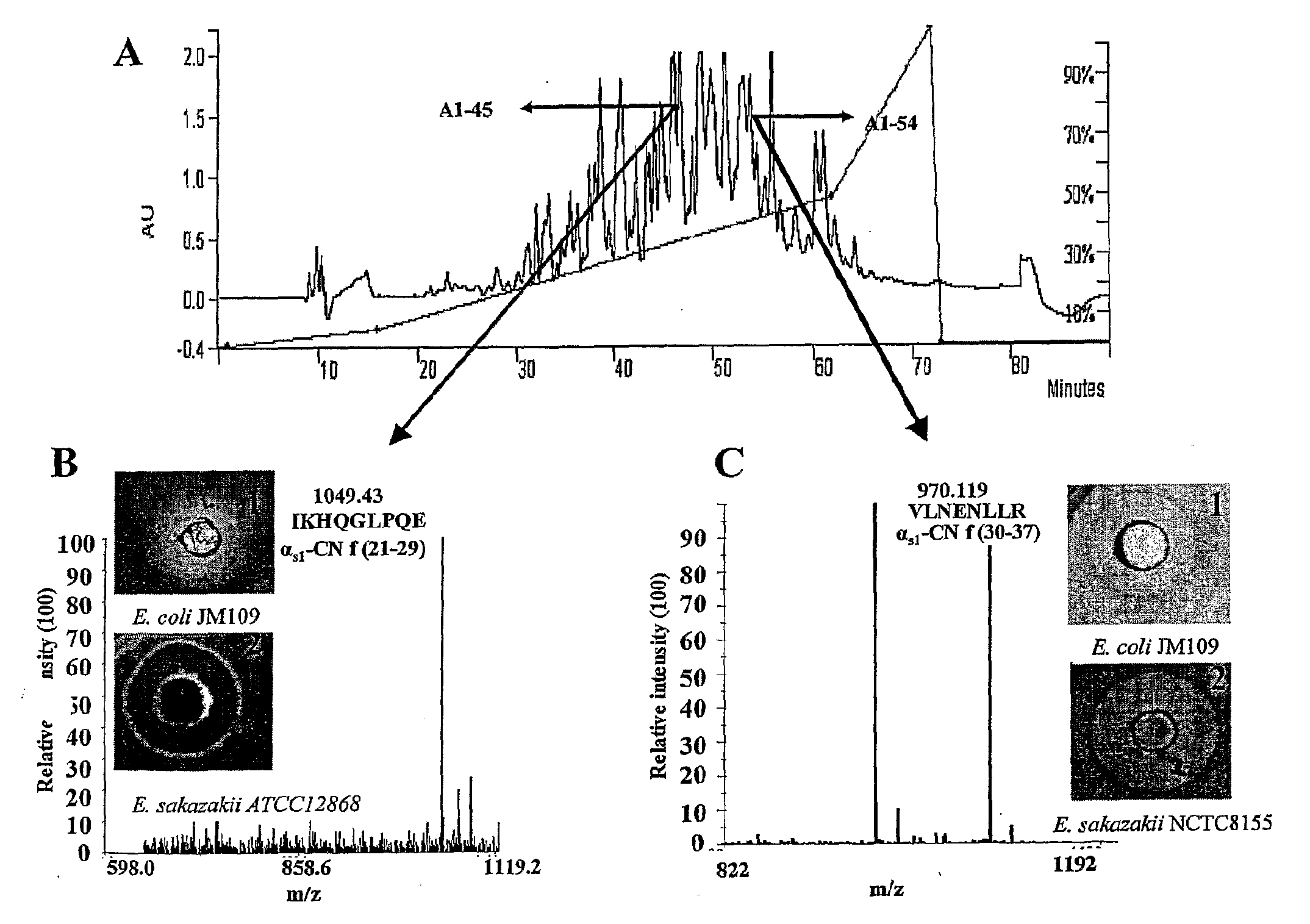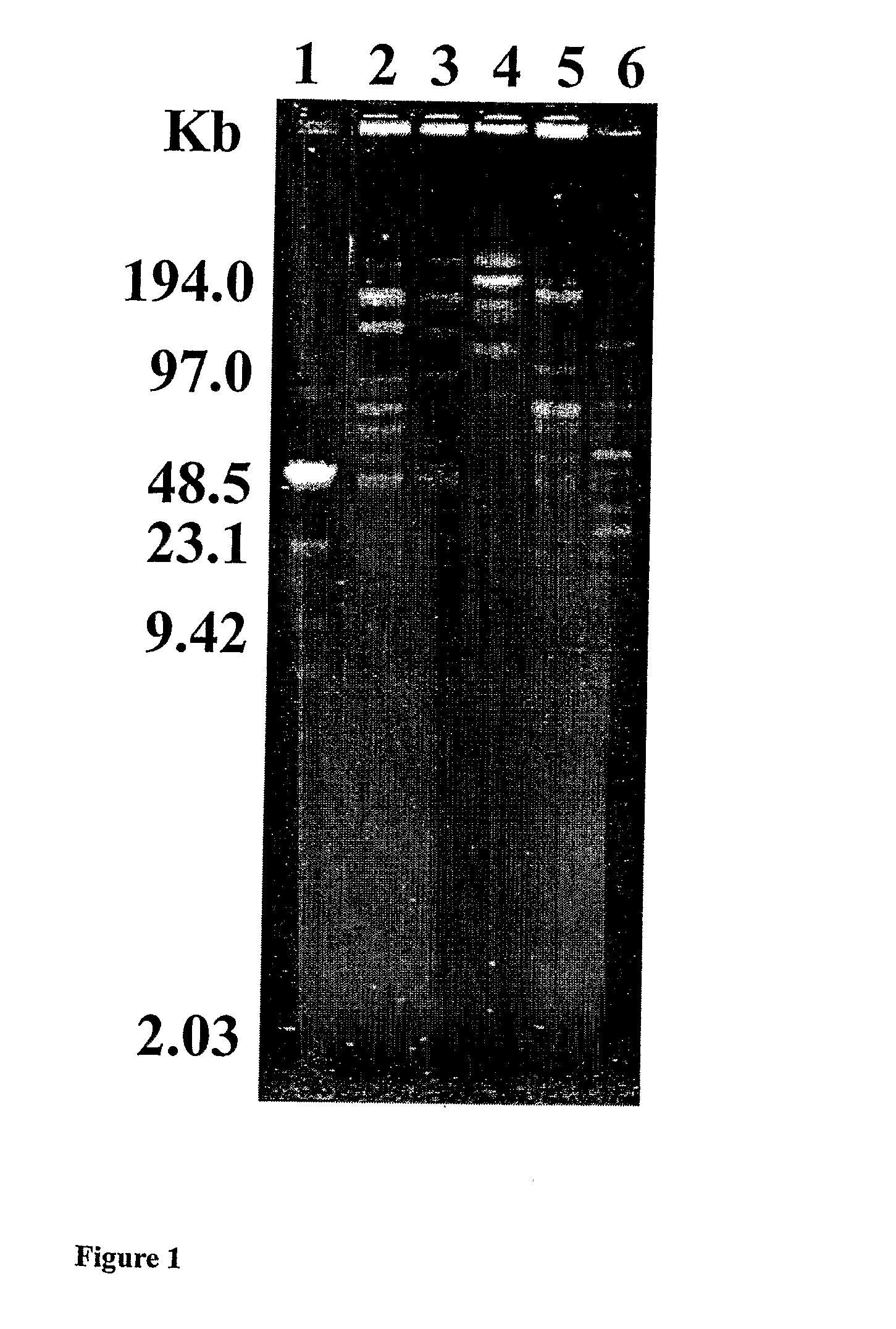Antimicrobial peptides and bacterial strains that produce them
a technology of antimicrobial peptides and bacteria, applied in the direction of peptide/protein ingredients, bacteria, bacteria, etc., can solve the problems of increasing the cost of production, affecting the development of resistant strains, and affecting the health of patients, so as to reduce the possibility of resistance development.
- Summary
- Abstract
- Description
- Claims
- Application Information
AI Technical Summary
Benefits of technology
Problems solved by technology
Method used
Image
Examples
Embodiment Construction
[0058]One of the objectives of this study was to discover novel bioactive peptides from bovine casein released using the proteolytic capabilities of LAB of mammalian intestinal origin. 205 isolates obtained from the porcine small intestine and 55 isolates of human adults and infant faecal origin were used in this study.
Screening for Isolates with Proteolytic Activity
[0059]All 260 isolates on LAB agar plates were screened for proteolytic activity using SMA and sodium caseinate as substrates. 5 isolates of porcine intestinal origin and 10 isolates of human infant and adult faecal origin were selected based on their proteolytic capabilities and potential to generate peptides Enterococcus faecalis (using the BLAST program) and therefore were considered unsuitable for further use in large-scale fermentations, as enterococci are not generally recognised as safe (GRAS) (21). Isolate 3L7 and 33L1 (human infant faecal isolates) showed 100% homology (BLAST program) with E. hirae and Staphyloc...
PUM
| Property | Measurement | Unit |
|---|---|---|
| flow rate | aaaaa | aaaaa |
| pH | aaaaa | aaaaa |
| diameter | aaaaa | aaaaa |
Abstract
Description
Claims
Application Information
 Login to View More
Login to View More - R&D
- Intellectual Property
- Life Sciences
- Materials
- Tech Scout
- Unparalleled Data Quality
- Higher Quality Content
- 60% Fewer Hallucinations
Browse by: Latest US Patents, China's latest patents, Technical Efficacy Thesaurus, Application Domain, Technology Topic, Popular Technical Reports.
© 2025 PatSnap. All rights reserved.Legal|Privacy policy|Modern Slavery Act Transparency Statement|Sitemap|About US| Contact US: help@patsnap.com



